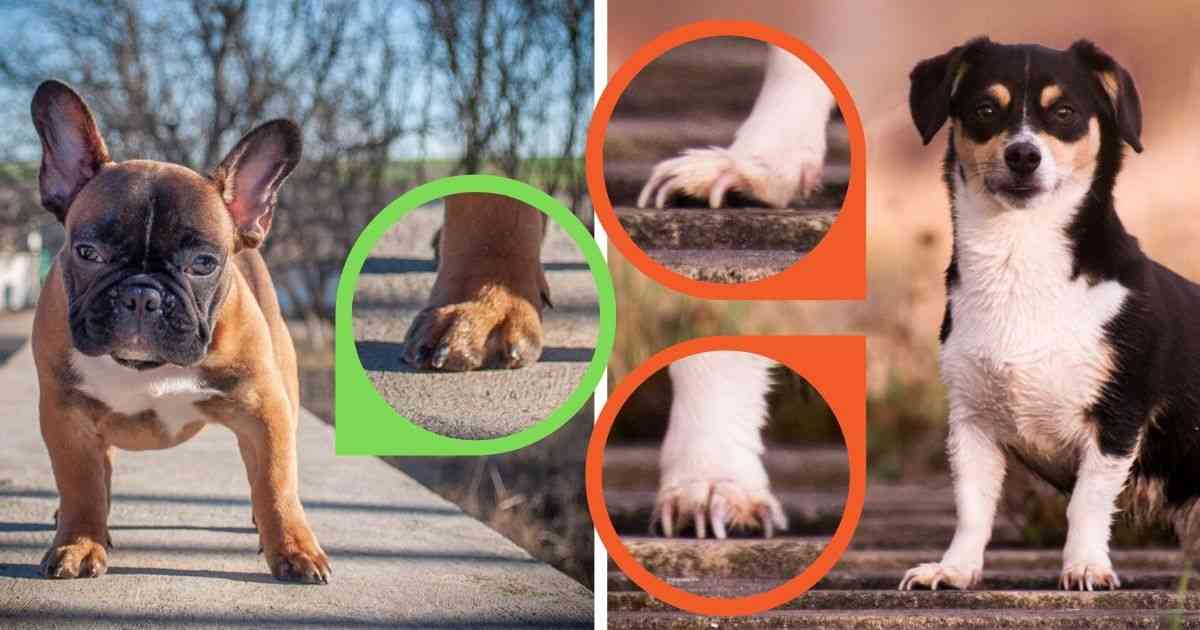Updated April 13, 2021
There is a lot of confusion about when dogs need their nails trimmed. On any given day, I will see at least one dog needing clipping that is not getting it, and another I am asked to clip that should not be done.
Here I am going to help you know when dog nails are too long, and most importantly, when they are not. Because it matters.
The Dangers Of Nail Trimming
In a normal dog, the quick is typically within 1mm of the end of the nail. This is the part of the nail with nerves and blood vessels.
When you clip a dog’s nails too short, you are going to hurt them. You might not notice at the time, but your dog certainly does, and they remember it.
Resilient, happy dogs can tolerate the occasional slip. But frequent over-clipping will cause any dog to associate nail clippers or foot handling with pain. An anxious dog might learn this from just one bad experience.
Every vet sees what happens next. These dogs become fearful about their feet being handled, and get very stressed when the time comes that they really need their nails clipped.
Any attempt at clipping causes (at best) constant foot pulling, which increases the risk of hurting them again. At worst they are actually panicking and need a sedation for their own good.
How To Tell When Nails Are Normal
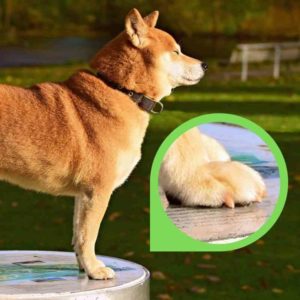
There are two easy ways to tell if your dog’s nails are the right length.
In a normal standing position, a dog’s nails at the correct length do not touch the ground. Each nail will generally hover 1mm above the surface, and only make contact during movement. To see this, get your dog to stand on a smooth surface and either crouch down or take a photo.
Although it is usually abnormal to hear a dogs’ nails clicking when they walk, for others it’s quite OK. Nail noise is therefore an unreliable test until you know what’s normal for your own dog.
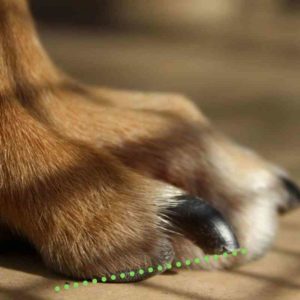
The second ‘rule of thumb’ is to draw an imaginary line forward from the base of the pad like in the picture. The nail should not cross the line. This dog has helpfully rotated his digit back so we can see it but it’s easier to do by picking up the paw.
For both measures, I will allow an extra 1 to 2 mm in an anxious dog just to be sure.
Why Don’t Some Dogs Need Trimming?
There is a widespread myth that all dogs need their nails clipped or trimmed short. This is presumably because people need to regularly do their own. A natural dog will not.
‘Natural’ means a dog similar enough to its wild cousins that the nails still function as nature intended. Therefore, a dog with the following attributes usually never needs nail trimming:
- Bodyweight above 10kg
- Walked and run every day
- Using hard surfaces, not just grass
The only common exception is the dewclaw, which you can learn all about at the link.
When Dog Nails Should Be Trimmed
When a dog’s nails are too long, the nail tips are in permanent contact with the ground,. The pressure often causes the digit to rotate backwards and up, or to twist sideways. This is presumably uncomfortable, like wearing shoes that squeeze your toes.
You can see all these features in the dog pictured at the start. If this dog does not have his nails clipped, some of the deviation in the toes will become permanent. This is particularly true for sideways rotation of the digit.
Dewclaws (the ‘thumbs’) should be trimmed when they catch your finger like in the photo, and then only back until they don’t.
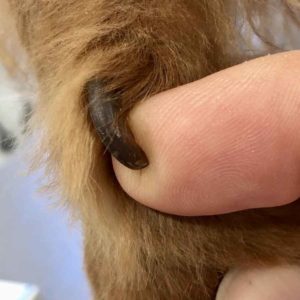
However, some dogs have what we call ‘long quicks’ so just touching the ground or hooking aren’t enough evidence. You see this a lot with older dogs. In the earlier photo the nails are clear, so we can see that the pink quick inside isn’t all that long.
Dogs with black nails present the greatest challenge. Before trimming these for the first time, you should always get expert advice. Even with visible quicks you should stay 2mm below where you think it ends.
When To Trim A Puppy’s Nails
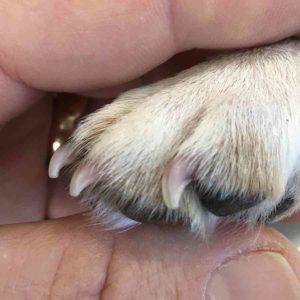
A puppy’s new nails start out with a sharp tip. As they grow they thicken, but this still leaves a fine point that scratches people. Although it can be clipped, great care is needed.
Most of the time when I’m asked, I say it’s too dangerous because the quicks are so close. Any slip and the puppy’s very first experience of nail clipping will be a painful one. Like always with puppy socialisation, early experiences must be good.
The pictured puppy had 1mm removed but they were still sharp afterwards. But they’ll wear down just fine once he starts walking in a week.
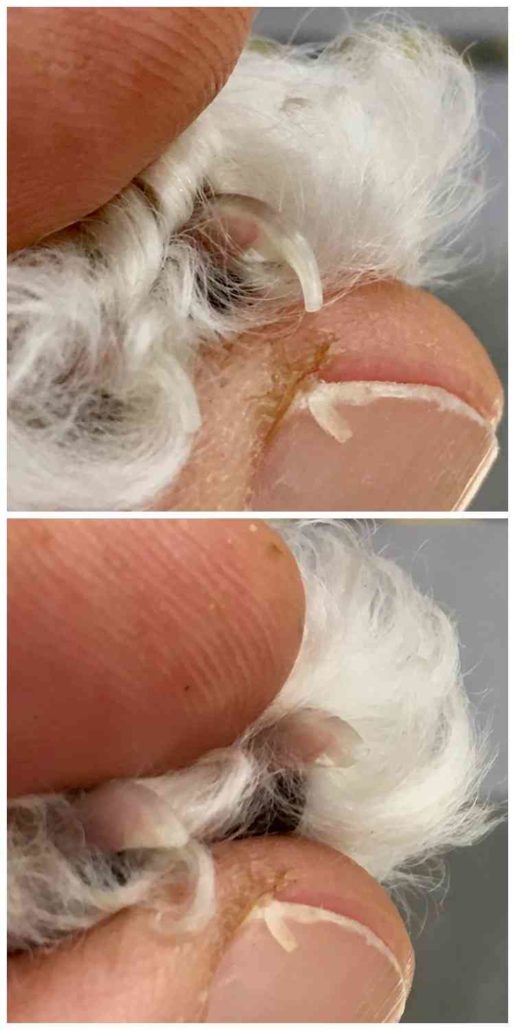
Here’s an example when the nails did need trimming. You can see how long and hooked they were before, and how I stayed well away from the quick when I cut them.
Judgements like these come with experience. I don’t expect you to start clipping your dog’s nails; I just hope that this article gives you the power to judge them for yourself. But of course, as with everything else, you are not alone. If you have doubts, just ask at your vet or grooming salon. They’ll be only too happy to help.
Related: How To Trim Dog Nails & Cat Claws
Have something to add? Comments (if open) will appear within 24 hours.
By Andrew Spanner BVSc(Hons) MVetStud, a vet in Adelaide, Australia. Meet his team here.

